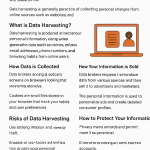- 🌍 Remote Work and the Digital Nomad Revolution
- ⌚ How Wearable Tech Empowers Remote Workers
- 1. Boosting Productivity with Smart Notifications
- 2. Health & Wellness Monitoring
- 3. Hands-Free Communication
- 4. Enhanced Collaboration
- 🧳 Wearable Tech and the Digital Nomad Lifestyle
- 1. Staying Connected Anywhere
- 2. Financial Management On-the-Go
- 3. Fitness on the Move
- 4. Safety and Security
- 🔒 Cybersecurity and Privacy Concerns
- 🚀 The Future of Wearable Tech in Remote Work
- 📈 Final Thoughts
The Impact of Wearable Tech on Remote Work and the Digital Nomad Lifestyle
The rise of wearable technology has transformed everything from fitness tracking to healthcare monitoring. But one of the most profound changes is how wearable devices are reshaping remote work and the digital nomad lifestyle. As millions of professionals embrace flexible work arrangements, wearables are no longer just gadgets—they’re essential tools for productivity, health, and connectivity.
In this blog post, we’ll dive deep into the impact of wearable technology on remote work, how it empowers digital nomads, and what the future holds for this fast-evolving industry.
🌍 Remote Work and the Digital Nomad Revolution
Before wearable tech became mainstream, remote work was often associated with laptops, Wi-Fi, and video calls. Today, it’s a lifestyle powered by smart devices, allowing professionals to work from anywhere—cafés in Bali, co-working hubs in Lisbon, or even a camper van on the road.
According to Statista, the number of digital nomads worldwide is increasing year after year, with wearable devices playing a huge role in how they manage work, health, and life balance.
Wearable technology has become the bridge between flexibility and productivity, making it easier to track work performance, stay connected, and maintain wellness while on the go.
⌚ How Wearable Tech Empowers Remote Workers
1. Boosting Productivity with Smart Notifications
Smartwatches and wearable devices help remote professionals filter distractions. Instead of constantly checking their phones, workers can receive priority notifications—emails, calendar reminders, and project updates—directly on their wrists. This streamlines workflow while reducing digital fatigue.
2. Health & Wellness Monitoring
Remote work often blurs the line between professional and personal life, leading to burnout. Wearables like Fitbit, Apple Watch, and Oura Ring encourage healthier routines by:
- Tracking steps and physical activity
- Monitoring heart rate and stress levels
- Sending reminders to stand up or stretch
For digital nomads traveling across time zones, wearables even suggest optimal sleep schedules to fight jet lag.
3. Hands-Free Communication
Smart glasses (like Meta Ray-Ban Stories or Google Glass Enterprise) and wireless earbuds allow remote workers to attend calls, record notes, or access information without being glued to their laptops. This is especially valuable for digital nomads working in transit.
4. Enhanced Collaboration
Augmented Reality (AR) wearables make it possible to collaborate virtually in immersive environments. Imagine remote designers or engineers using AR glasses to work together on 3D prototypes in real time.
🧳 Wearable Tech and the Digital Nomad Lifestyle
The digital nomad lifestyle is about freedom, but that freedom comes with challenges like irregular schedules, health concerns, and connectivity. Wearables address these pain points:
1. Staying Connected Anywhere
Wearables with built-in eSIMs (like the Apple Watch with LTE) enable nomads to stay connected without depending solely on local SIM cards or unreliable Wi-Fi.
2. Financial Management On-the-Go
Contactless payment through smartwatches (Apple Pay, Google Wallet, Garmin Pay) makes transactions seamless, especially when traveling through different countries.
3. Fitness on the Move
With constant traveling, gym memberships aren’t always practical. Wearables provide guided workouts, health tracking, and even meditation sessions to keep nomads physically and mentally fit.
4. Safety and Security
For solo travelers, wearables with GPS tracking and SOS alerts add a layer of security. Devices like Garmin smartwatches allow users to share real-time locations with trusted contacts.
🔒 Cybersecurity and Privacy Concerns
While wearable tech offers tremendous benefits, security and privacy risks are critical concerns for remote workers and digital nomads. Wearables often store sensitive data like health records, payment details, and location history.
Key risks include:
- Data breaches from poorly secured apps
- Location tracking vulnerabilities that expose users’ movements
- Integration risks when wearables connect with multiple devices or networks
👉 For digital nomads, using a VPN and enabling multi-factor authentication (MFA) is essential for safeguarding wearable data. Learn more from CISA’s Cybersecurity Tips.
🚀 The Future of Wearable Tech in Remote Work
The future of wearable technology is deeply intertwined with AI, IoT (Internet of Things), and 5G connectivity. Here’s what to expect:
- AI-Powered Productivity Insights – Wearables will track focus time, suggest work-rest cycles, and optimize schedules automatically.
- Seamless AR Meetings – Remote workers will join holographic meetings through AR/VR headsets.
- Digital Nomad Health Care – Medical-grade wearables will connect directly to doctors, enabling telemedicine on the move.
- Eco-Friendly Wearables – Sustainable, solar-powered smart devices will appeal to environmentally conscious digital nomads.
📈 Final Thoughts
Wearable technology has changed the way we work remotely and live as digital nomads. From productivity hacks to health monitoring and secure connectivity, wearables have become an essential part of the modern mobile workforce.
The integration of AI, IoT, and 5G will push wearable tech even further, making it indispensable for professionals seeking freedom, flexibility, and efficiency in their careers.
As remote work continues to evolve, so will the tools that empower it. Wearables aren’t just gadgets—they are the heartbeat of the digital nomad era.
🔑 SEO Keywords to Target:
- Wearable tech in remote work
- Digital nomad lifestyle technology
- Smartwatches for productivity
- Future of wearable devices
- Wearable healthcare for travelers
- AR wearables for collaboration
- Remote work technology trends










